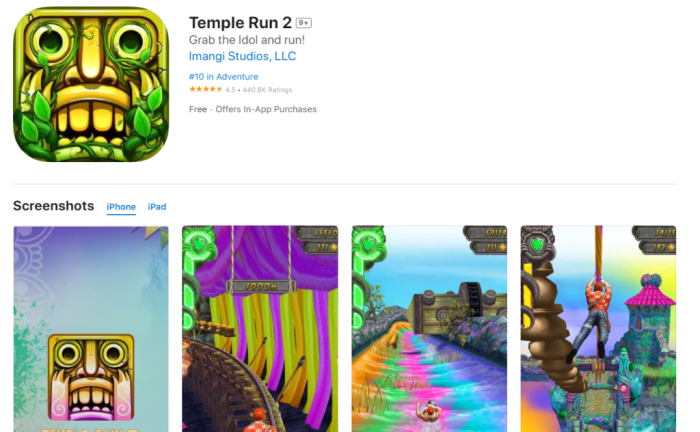The burgeoning market for offline iPhone games offers a diverse landscape of entertainment, catering to a wide range of preferences. However, the sheer volume of available titles makes discerning quality from mediocrity a challenge. This review delves into the mechanics, trends, and overall impact of this popular gaming segment, analyzing both its strengths and shortcomings.
We examine the dominant genres, charting their growth and popularity over the past five years. A closer look at game mechanics reveals how developers leverage in-app purchases and storytelling to enhance, or sometimes detract from, the user experience. Furthermore, the review critically assesses control schemes and their effectiveness on the iPhone platform, providing a balanced perspective on the current state of offline iPhone gaming.
Game Mechanics and Features

The captivating world of offline iPhone games hinges on a delicate balance of engaging mechanics, compelling features, and a well-crafted user experience. Understanding these elements is crucial to appreciating the diverse landscape of mobile gaming. Let’s delve into the intricacies of what makes these games tick.
Offline iPhone games employ a wide array of mechanics, tailored to their specific genre. These mechanics define the core gameplay loop, determining how players interact with the game world and progress towards their objectives. The effective integration of these mechanics is key to a game’s overall success and replayability.
Puzzle Game Mechanics
Puzzle games often rely on mechanics that involve manipulating objects or solving logical problems within a constrained environment. Popular examples include tile-matching (like Candy Crush Saga), where players swap adjacent tiles to create matches, and physics-based puzzles (like Cut the Rope), where players manipulate objects to guide a character to a goal. These mechanics often involve simple rules but require strategic thinking and planning for successful completion. The satisfaction comes from overcoming the challenge through clever problem-solving.
Strategy Game Mechanics
Strategy games, on the other hand, frequently incorporate resource management, base building, and unit control. Games like Plague Inc. utilize resource management to spread a disease strategically, while others, such as Clash of Clans (though primarily online, it offers significant offline functionality), emphasize base building and unit deployment to conquer opponents. These mechanics demand planning, tactical decision-making, and often involve long-term strategic considerations.
Role-Playing Game (RPG) Mechanics
RPGs typically feature character progression, skill trees, and combat systems. Games like Alto’s Odyssey, while not strictly a traditional RPG, incorporates elements of progression as the player unlocks new abilities and outfits. More traditional RPGs might involve turn-based combat or real-time combat, where players control characters with unique abilities and stats to overcome challenges. These mechanics often emphasize player agency and character customization, allowing players to shape their experience.
Impact of In-App Purchases on Gameplay Experience
In-app purchases (IAPs) can significantly impact the gameplay experience in offline iPhone games. While some games offer IAPs solely for cosmetic items, others incorporate them in ways that can alter the core gameplay loop. For example, IAPs might provide power-ups, extra lives, or accelerated progress. This can create a pay-to-win dynamic, potentially frustrating players who choose not to spend money. However, many games successfully integrate IAPs in a way that enhances the experience without compromising the fairness of the gameplay. The key is to offer optional enhancements that don’t create an insurmountable advantage for paying players. For example, a puzzle game might offer IAPs for hints or extra moves, but the core puzzle-solving mechanics remain challenging and rewarding even without spending.
Storytelling and Narrative in Different Genres
Storytelling plays a crucial role in many offline iPhone game genres. Narrative-driven games often feature branching storylines, dialogue choices, and compelling characters to immerse the player in the game world. Puzzle games might use narrative to provide context and motivation for the puzzles, while RPGs frequently incorporate extensive lore and character arcs. Strategy games can also benefit from narrative, providing a backdrop for the strategic conflicts and choices players make. The effectiveness of storytelling depends on the genre and the game’s overall design. A well-crafted narrative can enhance the player’s engagement and emotional connection to the game, creating a more memorable and satisfying experience.
Control Schemes in Offline iPhone Games
Offline iPhone games utilize various control schemes, each tailored to the specific genre and gameplay mechanics. Touchscreen controls are ubiquitous, ranging from simple tap-to-interact mechanics to more complex virtual joysticks and on-screen buttons. Some games employ swipe gestures for movement or actions, while others utilize a combination of taps, swipes, and pinches. The effectiveness of a control scheme depends on its intuitiveness, responsiveness, and its ability to translate the player’s intended actions into the game world accurately. A well-designed control scheme should be easy to learn and master, allowing players to focus on the gameplay rather than struggling with the controls. Games often incorporate tutorials or in-game hints to help players understand the control scheme and effectively navigate the game world.
Final Thoughts
While the offline iPhone game market thrives on diverse genres and innovative mechanics, inconsistencies remain. The reliance on in-app purchases often undermines the core gameplay, creating a pay-to-win dynamic that frustrates many players. Ultimately, the success of an offline iPhone game hinges on a compelling blend of engaging mechanics, intuitive controls, and a narrative that transcends the limitations of the platform. A more discerning approach to in-app purchases is crucial for enhancing the overall player experience and fostering a more sustainable and enjoyable gaming environment.